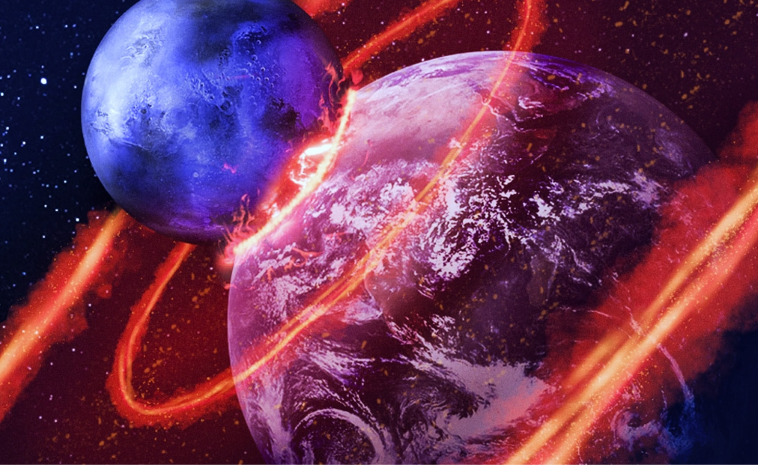Eta Carinae – The giant star that keeps astronomers awake at night
 ESO/G. Weigelt, CC BY 4.0, via Wikimedia Commons
ESO/G. Weigelt, CC BY 4.0, via Wikimedia Commons
Eta Karine is a giant among giants. There are only a few tens of such stars in the entire galaxy. If it were in the place of the Sun, it would swallow all the planets including Jupiter.
Its diameter is 11 astronomical units, which is over one and a half billion kilometers. It shines five million times brighter than the Sun and rotates around itself at a speed that reaches 90% of the theoretical maximum.
Eta Karine belongs to the most massive stars in the entire universe. By all accounts, the Sun is just a dot next to it. Eta Karine is the most dangerous star in our sky.
Eta Karina’s fate is to die young. Average stars live for billions of years, but Eta, like all giant stars, burns its fuel too quickly and will therefore only exist for a few million years.
Since it was created about 2.6 million years ago, its life is coming to an end. And this end will be dramatic. It will blow up in its own explosion as a supernova and the entire galaxy will remember that event.
It will flash with the brilliance of hundreds of billions of stars, and its deadly rays will rush at the speed of light to the borders of the galaxy.
No one knows exactly how it will affect life on our planet. This is why astronomers are watching Eta Karine carefully.
The star’s gravity tends to occupy as little space as possible and to compress the star. This is resisted by the star’s radiation. In very massive stars, the radiation can become so strong that the star explodes.
It is not known when Eta Karine will explode. Estimates are very broad and given that Eta is 7.5 thousand light-years away from us, maybe it is already gone, we just don’t know that yet.

Astronomers are trying to detect symptoms that could help predict this devastating event. The problem is that Eta has been showing symptoms preceding the explosion for more than two centuries. Due to its enormous mass and extremely fast rotation, it is extremely unstable. When Edmond Halley observed it in 1677, it had a brightness of the fourth magnitude, and after 1730 it became the brightest star in its constellation.
After that, its brightness increased and decreased conspicuously several times, and then, in the middle of the 19th century, something terrible happened to it, after which it flashed violently and became the brightest star in the night sky (-0.8 m), if you exclude Sirius, which is almost a thousand times closer to us.
It was 1843. At that time, no one knew what happened to the star. The amount of radiation that Eta emitted at that time was equal to that produced during a supernova flash. However, Eta Karine survived that event.
In recent times, astronomers have recorded similar events with other stars. In October 2004, in a galaxy 77 million light years away, UGC 4904, a strong eruption of a star was observed, and at first astronomers believed that it was a supernova. But it was a fake supernova and the star continued its life. However, it was destroyed in an explosion two years later.
The mystery surrounding the events of the 1840s was solved a century and a half later.
Curious to know what it was?
We do like to keep you on your toes sometimes, so dig up that thinking cap and stay tuned for the second part of this dope topic on our blog to find out more!

